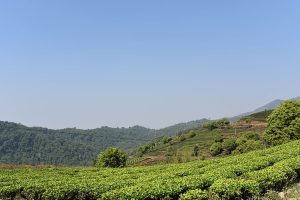Effects of climate change on agriculture
IPCC predicted in 2007 with high confidence that in Southern Europe, climate change would reduce crop productivity.: 14 In Central and Eastern Europe, forest productivity was expected to decline.
In Northern Europe, the initial effect of climate change was projected to increase crop yields. The 2019 European Environment Agency report “Climate change adaptation in the agricultural sector in Europe” again confirmed this.
According to this 2019 report, projections indicate that yields of non-irrigated crops like wheat, corn and sugar beet would decrease in southern Europe by up to 50% by 2050 (under a high-end emission scenario).
This could result in a substantial decrease in farm income by that date. Also farmland values are projected to decrease in parts of southern Europe by more than 80% by 2100, which could result in land abandonment.
The trade patterns are also said to be impacted, in turn affecting agricultural income. Also, increased food demand worldwide could exert pressure on food prices in the coming decades.
The effects of climate change on agriculture can result in lower crop yields and nutritional quality due to for example drought, heat waves and flooding as well as increases in pests and plant diseases. The effects are unevenly distributed across the world and are caused by changes in temperature, precipitation and atmospheric carbon dioxide levels due to global climate change.
In 2019, millions already suffer from food insecurity due to climate change and predicted decline in global crop production of 2% – 6% by decade. It has been predicted in 2019 that food prices will rise by 80% by 2050 which will likely lead to food insecurity, disproportionally affecting poorer communities.
A 2021 study estimates that the severity of heatwave and drought impacts on crop production tripled over the last 50 years in Europe – from losses of 2.2% during 1964–1990 to losses of 7.3% in 1991–2015.
Direct impacts from changing weather patterns are caused by rising temperatures, heat waves and changes in rainfall (including droughts and floods). There are also direct impacts from increased atmospheric CO2 levels: Higher crop yields due to CO2 fertilisation but also reduced nutritional value of crops (lower levels of micronutrients).
There will be climate driven changes in pests, plant diseases and weeds which can result in lower yields as well. Other indirect impacts from changed conditions include agricultural land loss from sea level rise and, on the other hand, more arable land due to less frozen land. There will also be less irrigation water availability due to melting glaciers.
There will also be impacts on erosion and soil fertility, effects on growing periods, food safety and losses (caused by fungi, leading to mycotoxins, and bacteria, like Salmonella, that increase with climate warming) and additional financial burdens.
Water scarcity – including disturbances of terrestrial precipitation, evaporation and soil moisture – caused or worsened by climate change can have substantial effects in agriculture.
A range of measures for climate change adaptation may reduce the risk of negative climate change impacts on agriculture (e.g. changes in management practices, agricultural innovation, institutional changes, climate-smart agriculture): 513 and are sometimes considered as part of changes towards a sustainable food system alongside (or in combination with) changes that reduce global warming from the food system.
According to the IPCC Sixth Assessment Report: “Climate change impacts are stressing agriculture, forestry, fisheries, and aquaculture, increasingly hindering efforts to meet human needs.”: 5–4 .
wikipedia







